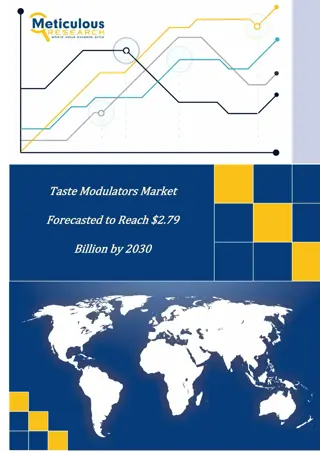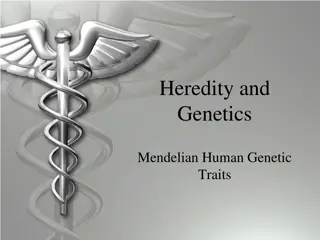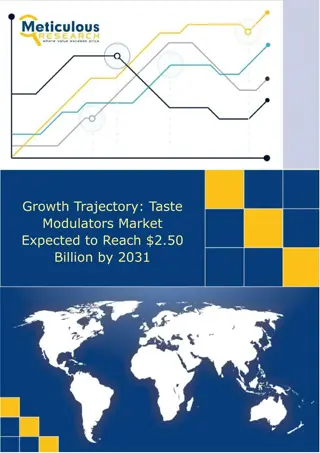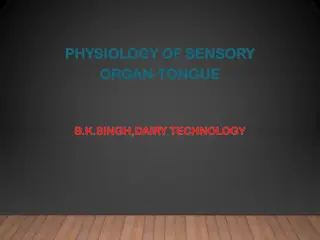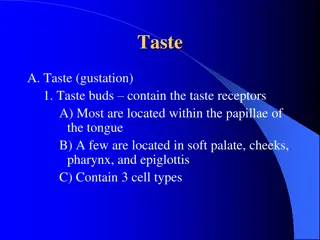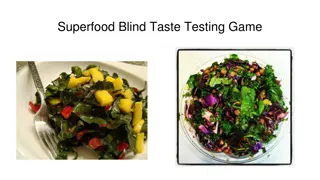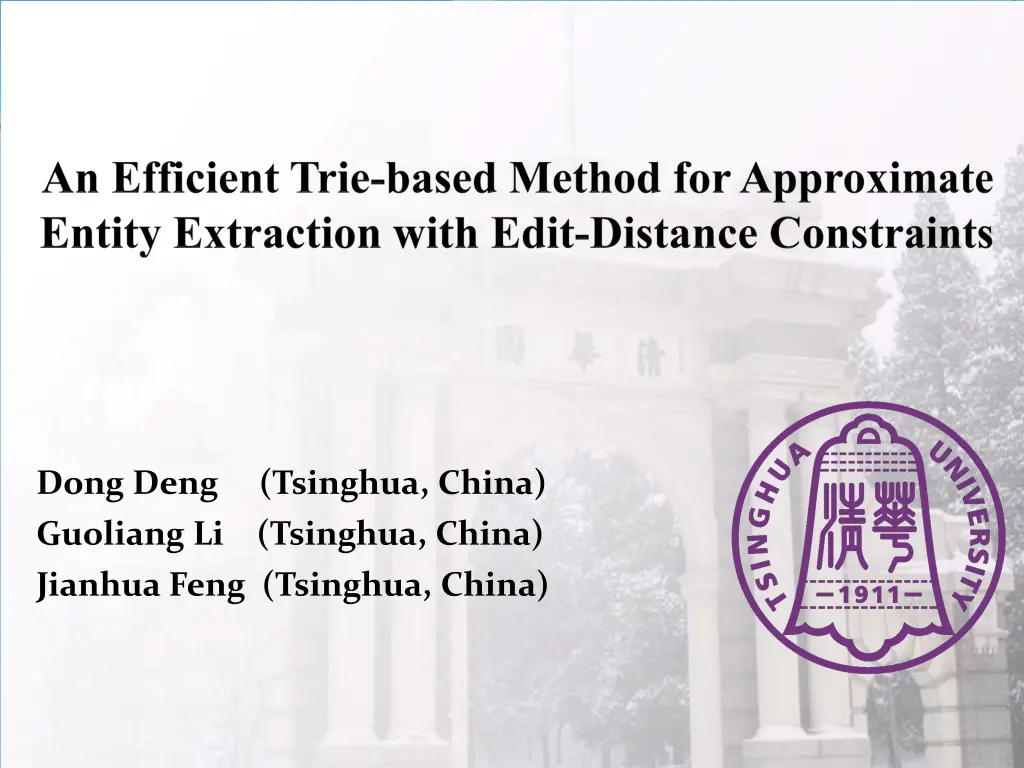
Trie-based Framework for Named Entity Recognition and Approximate Entity Extraction
Explore a Trie-based framework for optimizing partition schemes in Named Entity Recognition and Approximate Entity Extraction. Learn about real-world data challenges, dirty data handling, and automatic link additions. Dive into dictionary-based NER with influential historical figures like Isaac Newton and Sigmund Freud.
Uploaded on | 1 Views
Download Presentation

Please find below an Image/Link to download the presentation.
The content on the website is provided AS IS for your information and personal use only. It may not be sold, licensed, or shared on other websites without obtaining consent from the author. If you encounter any issues during the download, it is possible that the publisher has removed the file from their server.
You are allowed to download the files provided on this website for personal or commercial use, subject to the condition that they are used lawfully. All files are the property of their respective owners.
The content on the website is provided AS IS for your information and personal use only. It may not be sold, licensed, or shared on other websites without obtaining consent from the author.
E N D
Presentation Transcript
Dong Deng Guoliang Li (Tsinghua, China) Jianhua Feng (Tsinghua, China) (Tsinghua, China)
Outline Motivation Problem Formulation Trie-based Framework Trie-based Algorithms Optimizing Partition Scheme Experiment Conclusion Taste @ ICDE2012 6/1/2025 2/42
Named Entity Recognition Dictionary-based NER Documents Dictionary of Entities 1 Sir Isaac Newton was an English physicist, mathematician, astronomer, natural philosopher, alchemist, and theologian and one of the most influential men in human history. His Philosophi Naturalis Principia Mathematica, published in 1687, is by itself considered to be among the most influential books in the history of science, laying the groundwork for most of classical mechanics. Isaac Newton Sigmund Freud English Austrian physicist mathematician astronomer philosopher alchemist theologian psychiatrist economist historian sociologist ... 2 Sigmund Freud was an Austrian psychiatrist who founded the psychoanalytic school of psychology. Freud is best known for his theories of the unconscious mind and the defense mechanism of repression and for creating the clinical practice of psychoanalysis for curing psychopathology through dialogue between a patient and a psychoanalyst. Taste @ ICDE2012 6/1/2025 3/42
Automatically add the links Wikipedia http://en.wikipedia.org/wiki/Levenshtein_distance Taste @ ICDE2012 6/1/2025 4/42
Real-world Data is Rather Dirty DBLP Complete Search Typo in author Argyrios Zymnis Argyris Zymnis Typo in title relaxed related Taste @ ICDE2012 6/1/2025 5/42
Approximate Entity Extraction Approximate dictionary-based entity extraction finds all substrings from the document that approximately match the predefined entities. For example: Dictionary of Entities Documents Isaac Newton Sigmund Freud physicist astronomer alchemist theologian economist sociologist ... Sigmund Freund was an Austrian psychiatrestwho founded the psychoanalytic school of psychology. Freud is best known for his theories of the unconscious mind and the defense mechanism of repression and for creating the clinical practice of psychoanalysis for curing psychopathology through dialogue between a patient and a psychoanalayst. Taste @ ICDE2012 6/1/2025 6/42
Outline Motivation Problem Formulation Trie-based Framework Trie-based Algorithms Optimizing Partition Scheme Experiment Conclusion Taste @ ICDE2012 6/1/2025 7/42
Problem Formulation Approximate Entity Extraction: Given a dictionary of entities E = {e1, e2, . . . , en}, a document D, and a predefined edit distance threshold , approximate entity extraction finds all similar pairs <s, ei> such that ED(s, ei) , where s is a substring of D and ei E. Taste @ ICDE2012 6/1/2025 8/42
Edit Distance ED(r, s): The minimum number of single-character edit operations(insertion/deletion/substitution) to transform r to s. For example: ED(marios, maras) = 2 Di,0= i, Di,j= min{Di-1, j + 1, Di, j-1+ 1, Di-1, j-1+ ti, j}, 0 if ai= bj 1 if ai bj. D0,j= j, Substitute a->i Insert o where ti, j= Taste @ ICDE2012 6/1/2025 9/42
State-of-the-art Methods NGPP Faerie Inverted Index Prefix of 1-variant family q-grams Filtering Condition a substring matches with the prefix of 1-variant of partition Overlap must be larger than a threshold Shortage: Large Index Size Need to Tune Parameters Not efficient for large threshold Taste @ ICDE2012 6/1/2025 10/42
Outline Motivation Problem Formulation Trie-based Framework Trie-based Algorithms Optimizing Partition Scheme Experiment Conclusion Taste @ ICDE2012 6/1/2025 11/42
Observation Set =2 entity:vankatesh document: voncouver Split the entity into +1=3 segments A substring in document Taste @ ICDE2012 6/1/2025 12/42
Observation Set =2 document: voncouver entity:vankatesh >= 1 edit operation >= 1 edit operation >= 1 edit operation >= + 1 = 3 edit operation NOT SIMILAR Taste @ ICDE2012 6/1/2025 13/42
Observation Valid Substring: s is a valid substring if Lmin <=|s|<= Lmax+ Lmin: the minimum entity length. Lmax: the maximum entity length. Taste @ ICDE2012 6/1/2025 14/42
Trie-based Framework Step1: Partition entities into segments using even partition scheme. Taste @ ICDE2012 6/1/2025 15/42
Trie-based Framework Step2: Index the segments using a trie structure Taste @ ICDE2012 6/1/2025 16/42
Trie-based Framework Step3: From the document, find the matched segments from the trie structure. Baseline: Trie-search Method 3.1 Enumerator all valid substrings. 3.2 Find each suffix of every substring in the trie structure to check if it can reach the leaf node. 3.3 Verify the candidate pairs. Taste @ ICDE2012 6/1/2025 17/42
Trie-search Method 3.1 Enumerator all valid substrings. if Lmin- = 9-2=7 Lmax+ = 15+2=17 kaushit chekrabarti, surajit chaudhuri, vankatesh ganti, Len = 7 Taste @ ICDE2012 6/1/2025 18/42
Trie-search Method 3.1 Enumerator all valid substrings. if Lmin- = 9-2=7 Lmax+ = 15+2=17 kaushit chekrabarti, surajit chaudhuri, vankatesh ganti, Len = 8 Taste @ ICDE2012 6/1/2025 19/42
Trie-search Method 3.1 Enumerator all valid substrings. if Lmin- = 9-2=7 Lmax+ = 15+2=17 kaushit chekrabarti, surajit chaudhuri, vankatesh ganti, Len = 11 Taste @ ICDE2012 6/1/2025 20/42
Trie-search Method 3.1 Enumerator all valid substrings. if Lmin- = 9-2=7 Lmax+ = 15+2=17 kaushit chekrabarti, surajit chaudhuri, vankatesh ganti, Len = 17 Taste @ ICDE2012 6/1/2025 21/42
Trie-search Method 3.2 Find each suffix of every substring in the trie structure to check if it can reach the leaf. chaudhuri Pruned Taste @ ICDE2012 6/1/2025 22/42
Trie-search Method 3.2 Find each suffix of every substring in the trie structure to check if it can reach the leaf. surajit chaud Candidate of entity 3 Taste @ ICDE2012 6/1/2025 23/42
Trie-search Method 3.3 Verify the candidate pairs ED(surajit chaud, surajit chaudri)=2 Taste @ ICDE2012 6/1/2025 24/42
Trie-search Method Shortage Candidate pairs may overhead: <surajit_chaudhuri, surajit_chaudri> < urajit_chaudhuri, surajit_chaudri> <surajit_chaudhur , surajit_chaudri> ... Taste @ ICDE2012 6/1/2025 25/42
Outline Motivation Problem Formulation Trie-based Framework Trie-based Algorithms Optimizing Partition Scheme Experiment Conclusion Taste @ ICDE2012 6/1/2025 26/42
Trie-based Algorithm Step3: From the document, find the matched segments from the trie structure. To avoid duplicate computation, we do not enumerate all valid substrings. Trie-based Method 3.1 Search: Search matched segments. 3.2 Extension: Extend the matched segments to find similar pairs. Taste @ ICDE2012 6/1/2025 27/42
Trie-based Algorithm 3.1 Search: Search matched segments. kaushit chekrabarti, surajit chaudhuri, vankatesh ganti, Taste @ ICDE2012 6/1/2025 28/42
Trie-based Algorithm 3.2 Extend the matched segments to find similar pairs. D: kaushit chekrabarti, surajit chaudhuri, vankatesh ganti, e3: surajit chaudri e4: caushit chaudui e5: caushit chakrab Taste @ ICDE2012 6/1/2025 29/42
k a u s h i t _ c h e k r a b a r s 5 4 4 4 5 5 All Bigger Than Two, Terminate! u 5 4 3 4 4 4 r 4 4 3 3 3 3 a 4 3 3 2 2 2 j 5 4 3 2 1 1 i 5 4 3 2 1 0 e3 t _ c h a u d r i Taste @ ICDE2012 6/1/2025 30/42
k a u s h i t _ c h e k r a b a r c 1 1 2 3 4 5 Not Bigger Than Two, Extend The Right Part! a 1 0 1 2 3 4 u 2 1 0 1 2 3 s 3 2 1 0 1 2 h 4 3 2 1 0 1 i 5 4 3 2 1 0 e4 t _ c h 0 1 2 3 4 5 6 7 a 1 1 2 3 3 4 5 6 u 2 2 2 3 4 4 5 6 All Bigger Than Two, Prune! d 3 3 3 3 4 5 5 6 u 4 4 4 4 4 5 6 6 i 5 5 5 5 5 5 6 7 Taste @ ICDE2012 6/1/2025 31/42
k a u s h I t _ c h e k r a b a r Same as the left part of e4 Share Prefix! c 1 1 2 3 4 5 Not Bigger Than Two, Extend The Right Part! a 1 0 1 2 3 4 u 2 1 0 1 2 3 s 3 2 1 0 1 2 h 4 3 2 1 0 1 i 5 4 3 2 1 0 e5 t _ c h 0 1 2 3 4 5 6 7 a 1 1 2 3 3 4 5 6 Share Prefix! k 2 2 1 2 3 4 5 6 Not Bigger Than Two, Get Candidates! r 3 3 2 1 2 3 4 5 a 4 4 3 2 1 2 3 4 b 5 5 4 3 2 1 2 3 Taste @ ICDE2012 6/1/2025 32/42
Trie-based Algorithm 3.2 Extend the matched segments to find similar pairs. it_ch ush 2 aush 1 kaush 1 2 ekra 1 ekrab 2 ekraba Taste @ ICDE2012 6/1/2025 33/42
Trie-based Algorithm 3.2 Extend the matched segments to find similar pairs. We get two results pairs: <caushit chakrab, aushit_chekrab> <caushit chakrab, kaushit_chekrab> Taste @ ICDE2012 6/1/2025 34/42
Trie-based Algorithm Two-level Trie Taste @ ICDE2012 6/1/2025 35/42
Outline Motivation Problem Formulation Trie-based Framework Trie-based Algorithms Optimizing Partition Scheme Experiment Conclusion Taste @ ICDE2012 6/1/2025 36/42
Obvservation Even Partition: vanateshe van ate she Taste @ ICDE2012 6/1/2025 37/42
Obvservation Even Partition: vanateshe Extend 5 times. C=5 van ate she an efficient filter for approximate membershep checking. kaushit chekrabarti, surajit chaudhuri, vankatesh ganti, dong xin. vancouver, canada. sigmod 2008. Taste @ ICDE2012 6/1/2025 38/42
Obvservation Uneven Partition: vanateshe vana tes he Taste @ ICDE2012 6/1/2025 39/42
Obvservation Uneven Partition: vanateshe Extend 2 times. C=2 vana tes he an efficient filter for approximate membershep checking. kaushit chekrabarti, surajit chaudhuri, vankatesh ganti, dong xin. vancouver, canada. sigmod 2008. Taste @ ICDE2012 6/1/2025 40/42
Optimize Object Entity: c1c2 c3c4 cm-2cm-1 cm Segments: g g1 g2 g +1 Appear Time: Wg1 Wg2 Wg Wg +1 Document ?+1??? C= ?=1 Optimize Object: C=M[ +1][m]. M[i][j]: the minimum totle partition weight to partition c1c2 cj-1cj into i segments. Taste @ ICDE2012 6/1/2025 41/42
Dynamic Way: If the start position of last partition is p, Then: C=M[ +1][m]=M[ ][p 1]+W?? ?? Iterative we have Taste @ ICDE2012 6/1/2025 42/42
Determining Wg Build A Suffix Trie. The segment g The number of subtrie leaf nodes = The occurrence time in document = Wg Taste @ ICDE2012 6/1/2025 43/42
Pruning Even VS. Dict+Doc Method Even involves larger candidate set Dict+Doc counts the indexing time Make indexing more efficient Using Segment Length to Do Pruning. Using Even-Partition Weight as An Upper Bound. Adding Extra Pointers On Suffix Trie. Taste @ ICDE2012 6/1/2025 44/42
Time Comlexity: Trie-Search: ????+? O ?=???? ? Search-Extension: ? ? ? + ??????? O ? + ?????? ????+? ? where ? = ??/ + 1 ?=???? ? Taste @ ICDE2012 6/1/2025 45/42
Time Comlexity: Search-Extension: O ? + ?????? Sort-Extension: ?????? ? O ? + where is the ratio of the trie. Taste @ ICDE2012 6/1/2025 46/42
Time Comlexity: Sort-Extension: ?????? ? O ? + Dict+Doc Partition: ??????? ? O ? + + Where CD is the candidate number using Dict+Doc partition method, CD<<C. Taste @ ICDE2012 6/1/2025 47/42
Outline Motivation Problem Formulation Trie-based Framework Trie-based Algorithms Optimizing Partition Scheme Experiment Conclusion Reference Taste @ ICDE2012 6/1/2025 48/42
Experiment Setup Three real Data sets Existing algorithms NGPP (downloaded from its hompage) Faerie (we implemented) Taste @ ICDE2012 6/1/2025 49/42
Search-Extension VS Sort-Extension SORT-EXTENSION was about 3-4 times faster than SEARCH-EXTENSION. This is because SORT-EXTENSION shares the computation on the common prefixes for different entities. Taste @ ICDE2012 6/1/2025 50/42





